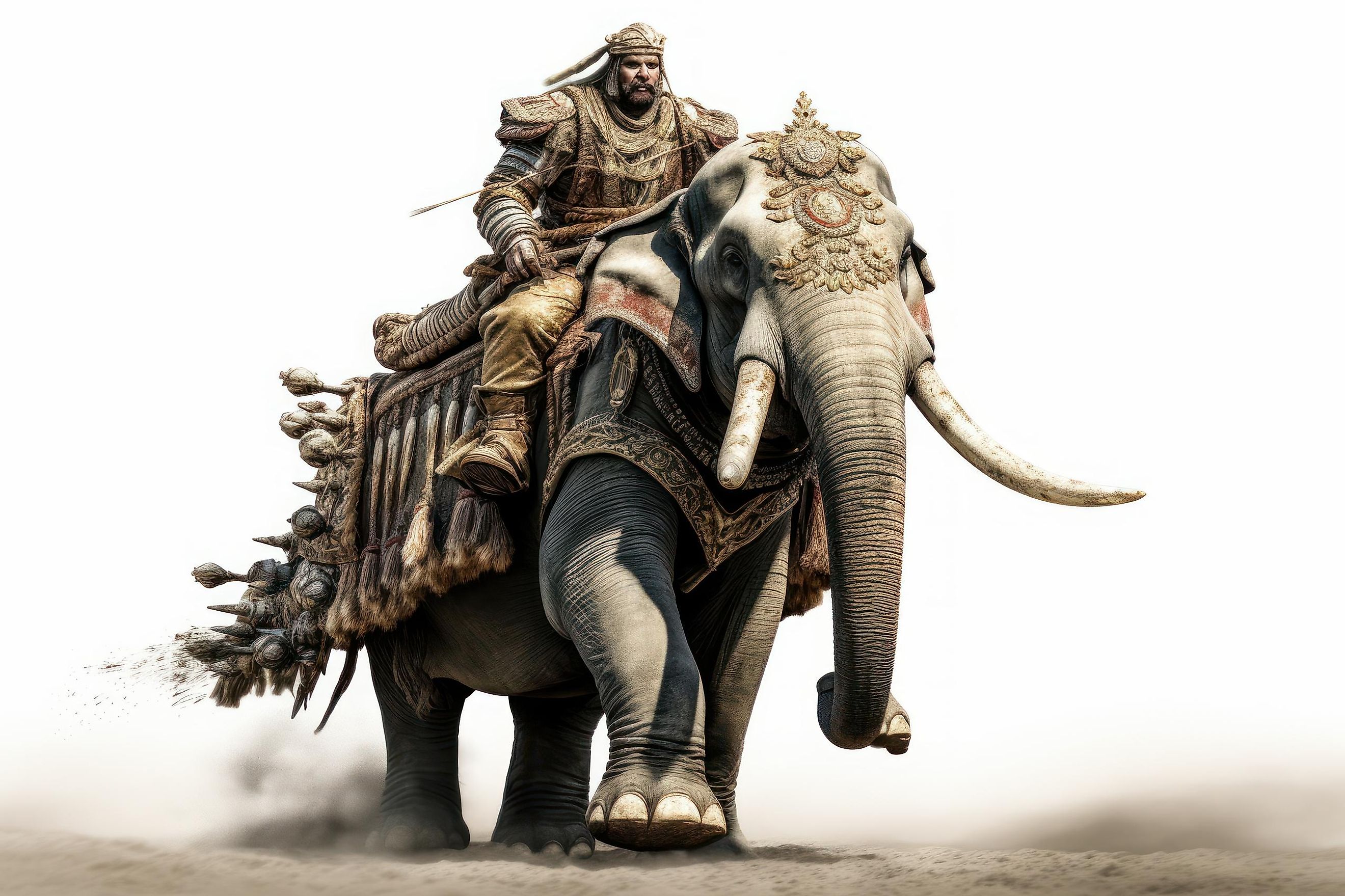
7 Terrifying Weapons Of The Ancient World
Weapons have been in circulation longer than the written word, wheel, or just about any other identifiable tool. For as cooperative as human beings can be, conflict is also in our blood. Brother against brother, tribe against tribe, or empire against empire, battles take all shapes and sizes and often utilize whatever resources are available to smite the enemy in question. Over the centuries, this has progressed from primitive objects that can cause blunt-force trauma to sharpened points able to pierce flesh, to blades capable of slashing, to long-range implements, and even to domesticated animals. These are the seven most terrifying weapons from the ancient world.
Khopesh
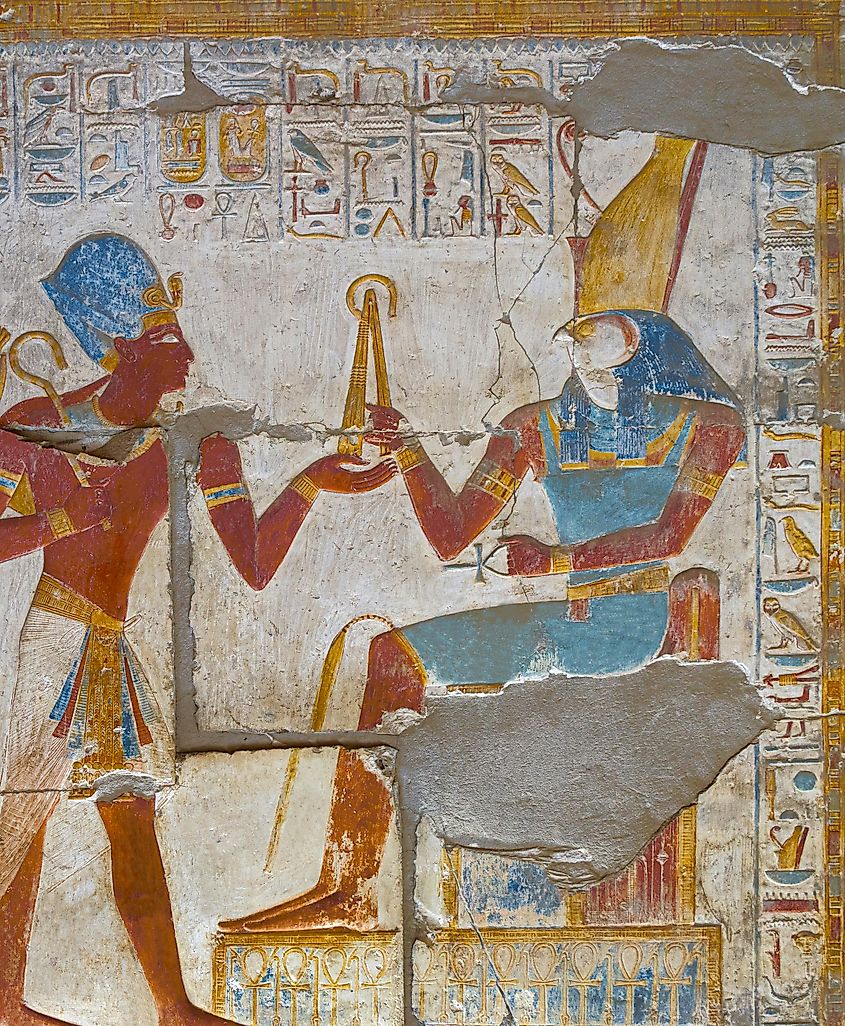
The Ancient Egyptians were masters of megalithic engineering, but they also showed a lot of prowess when it came to weapons of war. The khopesh, also known as the sickle sword, is a prime example. This curved blade, which is technically categorized as an axe rather than a true sword, was forged in bronze and generally measured between 19 to 24 inches in length. It not only proved itself on the battlefield but also served as a symbol of power amongst rulers – with the likes of Ramses II and Queen Nefertiti being depicted with it in hand. While the khopesh (which means "the foreleg of an animal," in obvious reference to its shape) was honed and popularized by New Kingdom Egyptians (~1570 - 1070 BC), it can be traced back to the earliest known civilization of Southern Mesopotamia, the Sumer, around the 3rd millennium BC. Simpler copper-based sickle swords date back even further.
Catapult
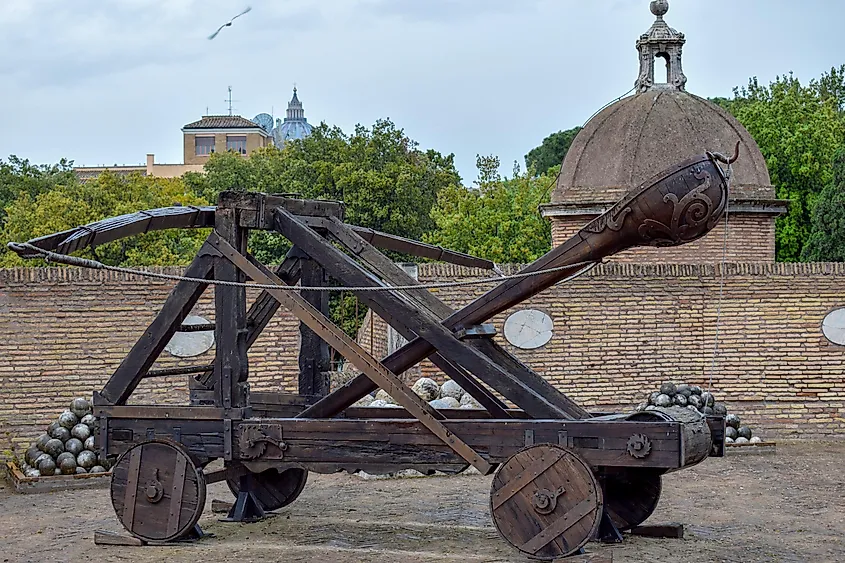
While this projectile-hurling siege weapon might not strike the visceral fear of a sharp blade or blunt instrument, the consequences of its use would have been undeniably terrifying. Watching the enemy wheel several catapults to the edge of town meant serious impending destruction for property, defenses, soldiers, and bystanders. The earliest iterations began showing up in the first half of the first millennium BC and more closely resembled crossbows. But by the 3rd century BC, the Greeks, thanks to the famous scientist/inventor Archimedes, progressed the iconic torsion catapult to the point where it could toss enormous, wall-smashing stones. No wonder the term catapult, which is derived from the Greek terms kata and pallein (i.e., "to hurl against"), cemented itself into common history. Catapults were subsequently adopted by the Romans, Chinese, and a multitude of other armies.
War Elephant

If a thousand-pound inanimate object flying straight toward you wasn't startling, imagine how you might react at seeing a multi-ton raging elephant stampeding your way. Elephants have been utilized by humans for roughly 4,000 years – initially for farming purposes. But given their strength and ability to intimidate, is it any wonder why they were included in military campaigns? The first evidence of war elephants belongs to China, during the Shang Dynasty (1600 - 1027 BC, but probably close to 1100). Their effectiveness caught on, and soon, they were being implemented in increasing numbers by the empires of Asia and Mesopotamia. In 331 BC, Alexander the Great encountered 15 war elephants (along with 200,000 Persian troops) at the Battle of Gaugamela (in modern-day Northern Iraq), followed by 100 war elephants at the Battle of Hydaspes, when he invaded Punjab, India, five years later. After successfully thwarting the resistance of Pavataha (aka King Porus), he integrated 80 surviving elephants into his own army.
Wooden Club
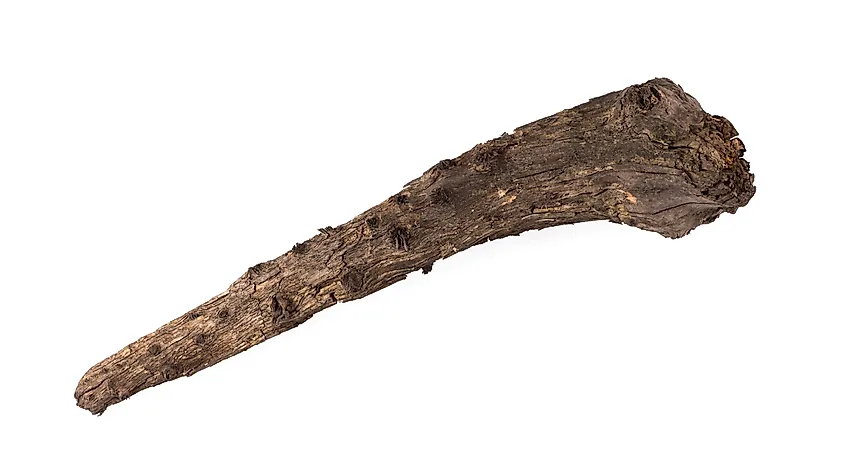
Sometimes, the simplest of tools are the most effective. Wooden clubs may lack the visual allure of many of the weapons throughout history, but in terms of close-range, blunt-force-trauma, our Neolithic ancestors had it figured out. Fans of The Walking Dead will know how devastating a smack to the head with a hard wooden club can be. A similar scenario seems to have played out some 7,000 years ago at three different sites in modern-day Germany and Austria, where several mass graves have been found, with many of the 26, 34, and 67 individuals identified showing severe trauma to the head. Though wood does not usually preserve well, a club dated to 3550 – 3340 BC was uncovered from the United Kingdom's Thames River. Studies using a replica of this cricket-bat-like weapon imitated damage consistent with the mass-grave victims from the ancient, village-destroying raids.
Bow And Arrow
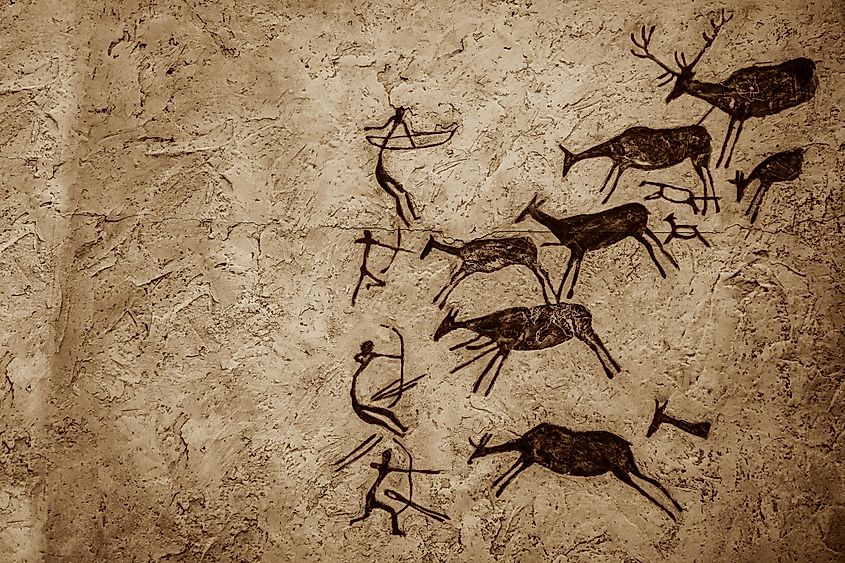
Archery definitively emerged in Africa's Middle Stone Age, between 37,000 and 65,000 years ago. However, there is some evidence out of South Africa that suggests bow and arrow technology may have been in use as early as 71,000 years ago. Interestingly, this hunting tool and weapon of war has not been confirmed to have made the migration out of Africa until 11,000 years ago. But from then on, this tool became a global phenomenon. It was used in Europe and Western Asia in the Late Upper Paleolithic to Terminal Pleistocene era, and in Japan, Northeast Asia, and North and South America also beginning in the Terminal Pleistocene. A sharpened spear sailing through the air at great speeds was sufficient to take down large, community-sustaining mammals (especially when fired en masse), and more than enough to fell humans from rival tribes. The bow and arrow method continues to be an effective hunting strategy, with the San people of South Africa utilizing traditional bows and American elk hunters using high-tech (but still manual) versions.
Pugio
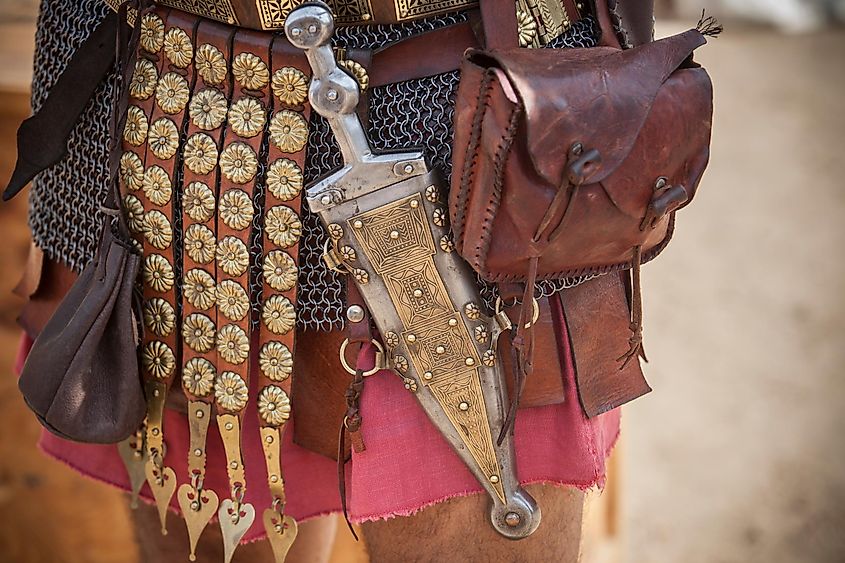
The pugio was a dagger used by Roman soldiers. It was mounted as a side arm for when the battle shifted to hand-to-hand combat. It was also a common weapon of choice when it came to suicide and assassination (as was the case when conspiring senators stabbed Julius Caesar 23 times using these daggers). The pugio was an intimate, close-range tool – a fact that makes it all the more viscerally intimidating. The final proposed purpose of the pugio was for display and offering. For instance, in 2019, an amateur archeologist armed with a metal detector uncovered a well-preserved pugio that was intentionally buried after a 15 BC battle between the Romans and Rhaetian tribesmen – perhaps in praise of the gods.
Urumi
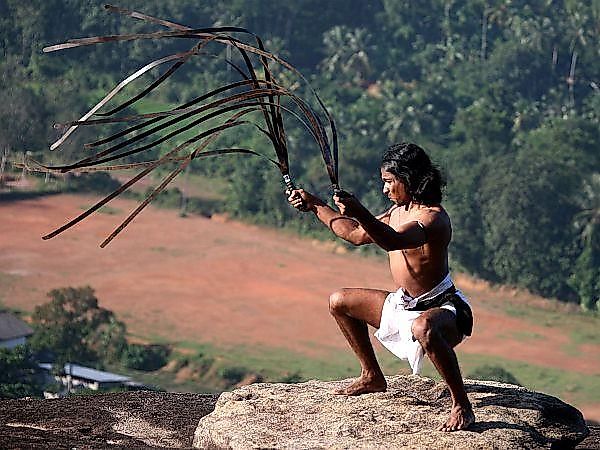
Speaking of blades, one wild and ancient concoction that has to be mentioned is the Urumi. This collection of flexible blades (upwards of 32) is used like a whip – albeit one of extraordinary consequence to those being attacked, as well as the attacker himself, should he be anything less than a master in the Kalaripayattu martial arts. This weapon is specific to the history of modern-day India and Sri Lanka, with the earliest versions supposed to have emerged during the Sangam Period (i.e., 1,800 years ago). The Urumi could be used to fend off multiple opponents at once, delivering severe slashes during its swift and chaotic movements. When not in use, the blades were wrapped around the fighter's waist and worn like a belt.
The weapons of today are capable of mass destruction, but the implements from the ancient world were terrifyingly intimate. Soldiers, whether conscripted or volunteers, and common citizens alike faced the very real possibility of being confronted by one of these startling, painful, and life-threatening instruments. At any moment, an expanding empire or an aggressive group of nomads could charge over the hill, likely brandishing one of these horrible weapons.











